Abstract
A new methodology for the construction of combinatorial libraries is described. The approach, termed dendrimer-supported combinatorial chemistry (DCC), centers on the use of dendrimers as soluble supports. Salient features of DCC include solution phase chemistry, homogeneous purification, routine characterization of intermediates, and high support loadings. To demonstrate the feasibility of DCC, single compounds and a small combinatorial library were prepared via the Fischer indole synthesis. Excellent product yields and purities were obtained, and dendrimer-protected intermediates could be routinely analyzed by 1H and 13C NMR and by mass spectrometry. The results indicate that DCC is a general and efficient strategy for the generation of combinatorial libraries.
Full text
PDF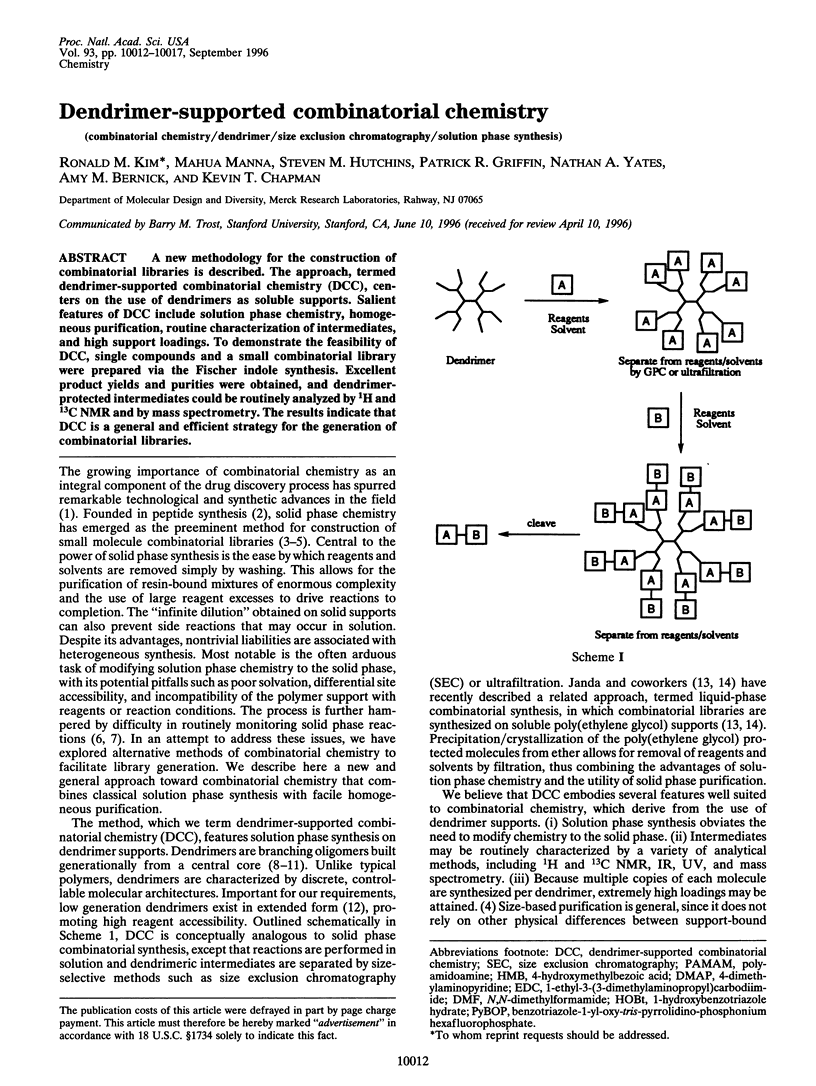
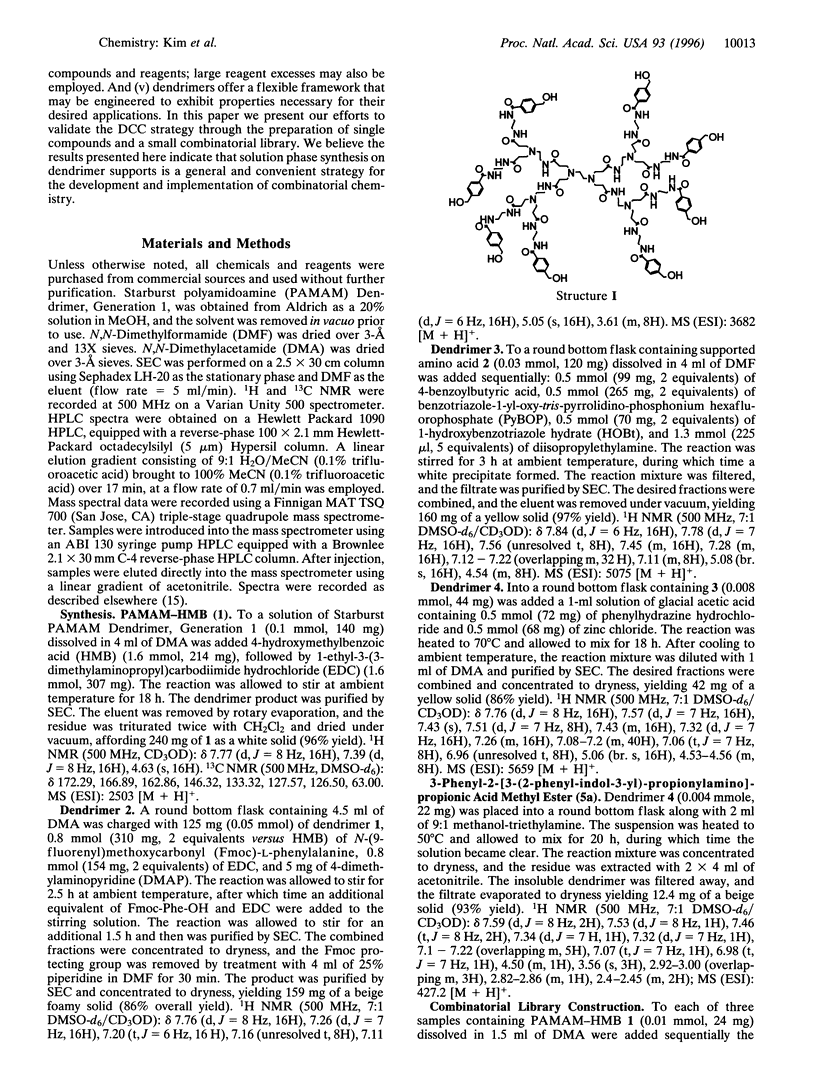
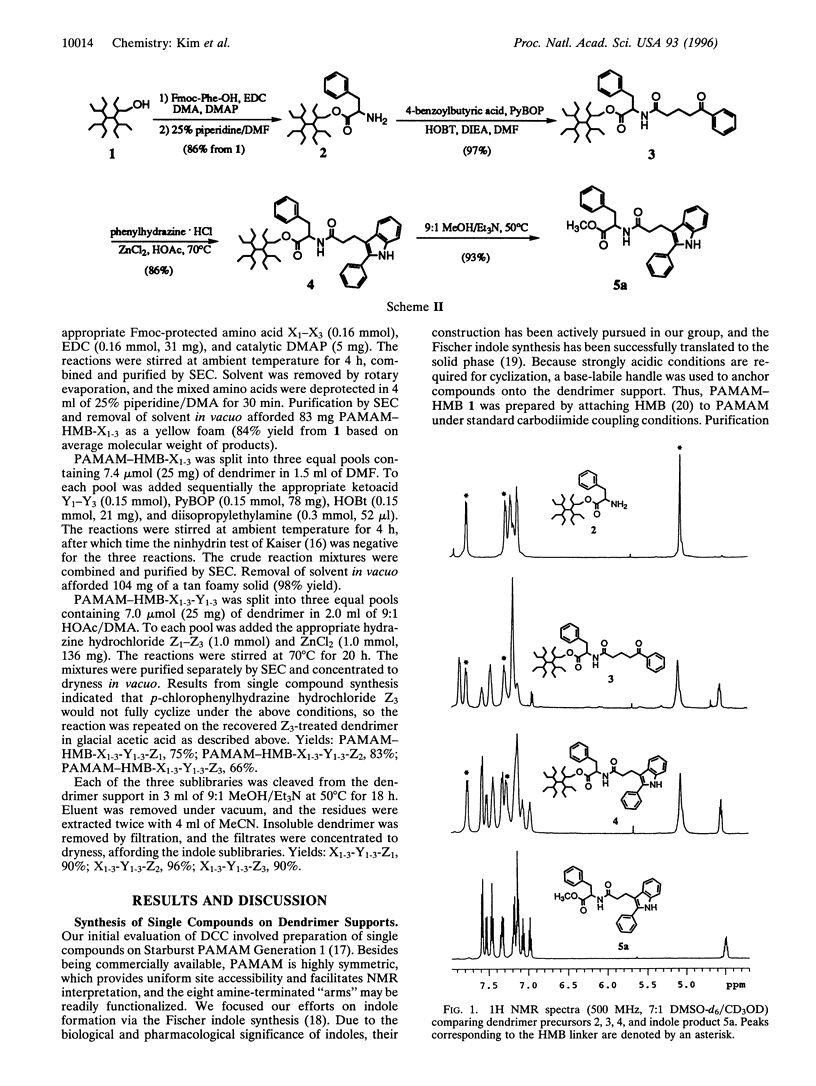
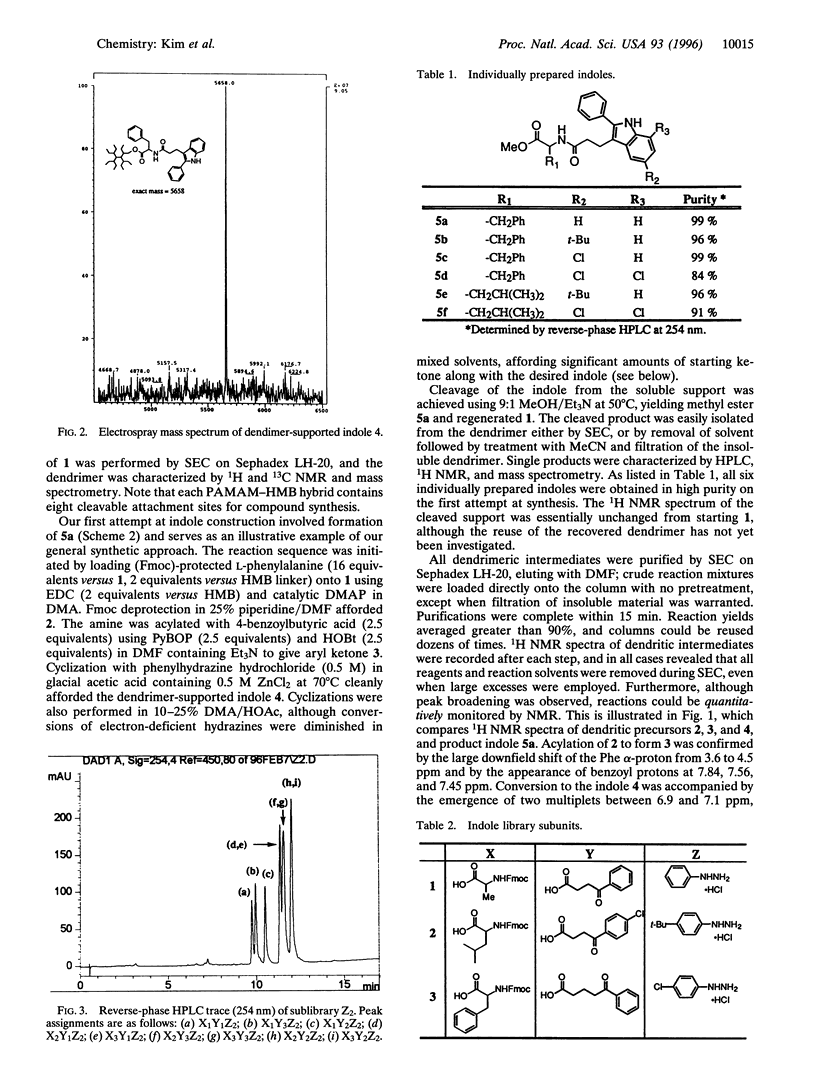
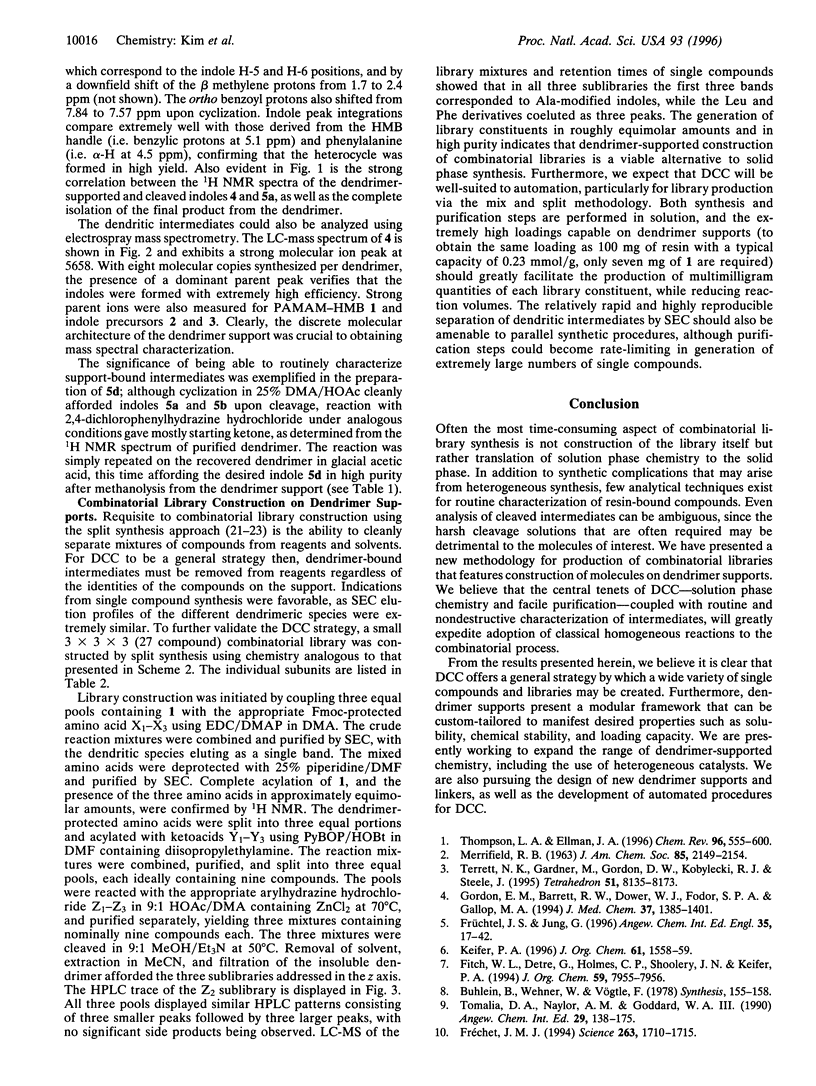
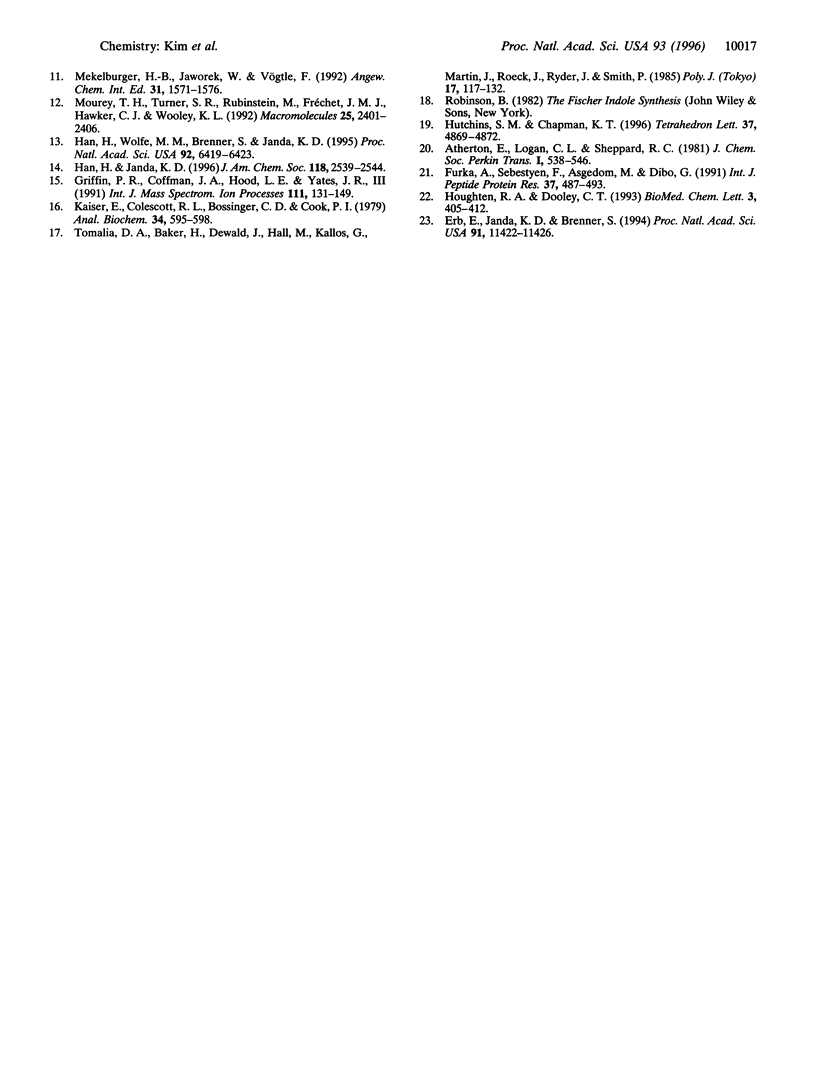
Selected References
These references are in PubMed. This may not be the complete list of references from this article.
- Erb E., Janda K. D., Brenner S. Recursive deconvolution of combinatorial chemical libraries. Proc Natl Acad Sci U S A. 1994 Nov 22;91(24):11422–11426. doi: 10.1073/pnas.91.24.11422. [DOI] [PMC free article] [PubMed] [Google Scholar]
- Fréchet J. M. Functional polymers and dendrimers: reactivity, molecular architecture, and interfacial energy. Science. 1994 Mar 25;263(5154):1710–1715. doi: 10.1126/science.8134834. [DOI] [PubMed] [Google Scholar]
- Furka A., Sebestyén F., Asgedom M., Dibó G. General method for rapid synthesis of multicomponent peptide mixtures. Int J Pept Protein Res. 1991 Jun;37(6):487–493. doi: 10.1111/j.1399-3011.1991.tb00765.x. [DOI] [PubMed] [Google Scholar]
- Gordon E. M., Barrett R. W., Dower W. J., Fodor S. P., Gallop M. A. Applications of combinatorial technologies to drug discovery. 2. Combinatorial organic synthesis, library screening strategies, and future directions. J Med Chem. 1994 May 13;37(10):1385–1401. doi: 10.1021/jm00036a001. [DOI] [PubMed] [Google Scholar]
- Han H., Wolfe M. M., Brenner S., Janda K. D. Liquid-phase combinatorial synthesis. Proc Natl Acad Sci U S A. 1995 Jul 3;92(14):6419–6423. doi: 10.1073/pnas.92.14.6419. [DOI] [PMC free article] [PubMed] [Google Scholar]
- Kaiser E., Colescott R. L., Bossinger C. D., Cook P. I. Color test for detection of free terminal amino groups in the solid-phase synthesis of peptides. Anal Biochem. 1970 Apr;34(2):595–598. doi: 10.1016/0003-2697(70)90146-6. [DOI] [PubMed] [Google Scholar]
- Keifer Paul A. Influence of Resin Structure, Tether Length, and Solvent upon the High-Resolution (1)H NMR Spectra of Solid-Phase-Synthesis Resins. J Org Chem. 1996 Mar 8;61(5):1558–1559. doi: 10.1021/jo952001t. [DOI] [PubMed] [Google Scholar]
- Thompson Lorin A., Ellman Jonathan A. Synthesis and Applications of Small Molecule Libraries. Chem Rev. 1996 Feb 1;96(1):555–600. doi: 10.1021/cr9402081. [DOI] [PubMed] [Google Scholar]


